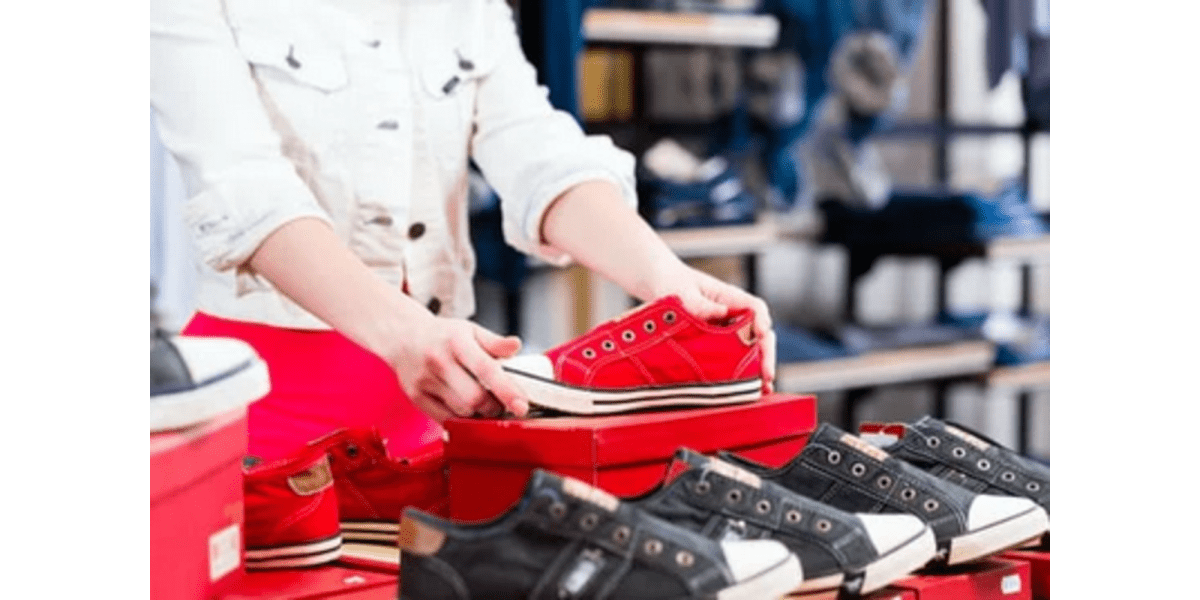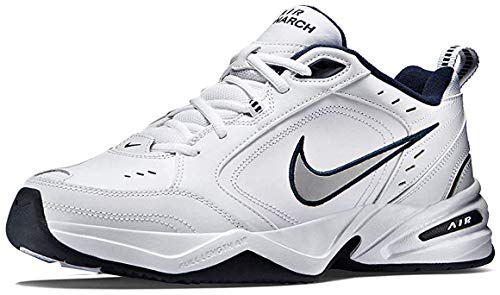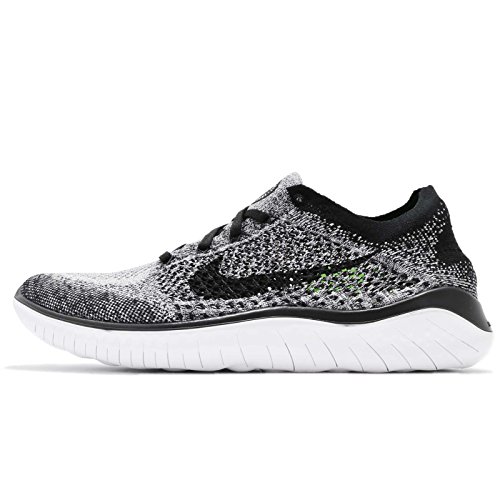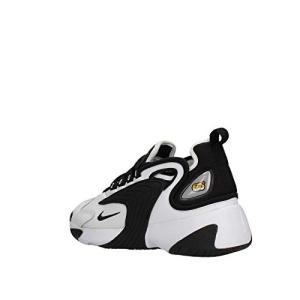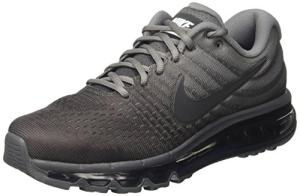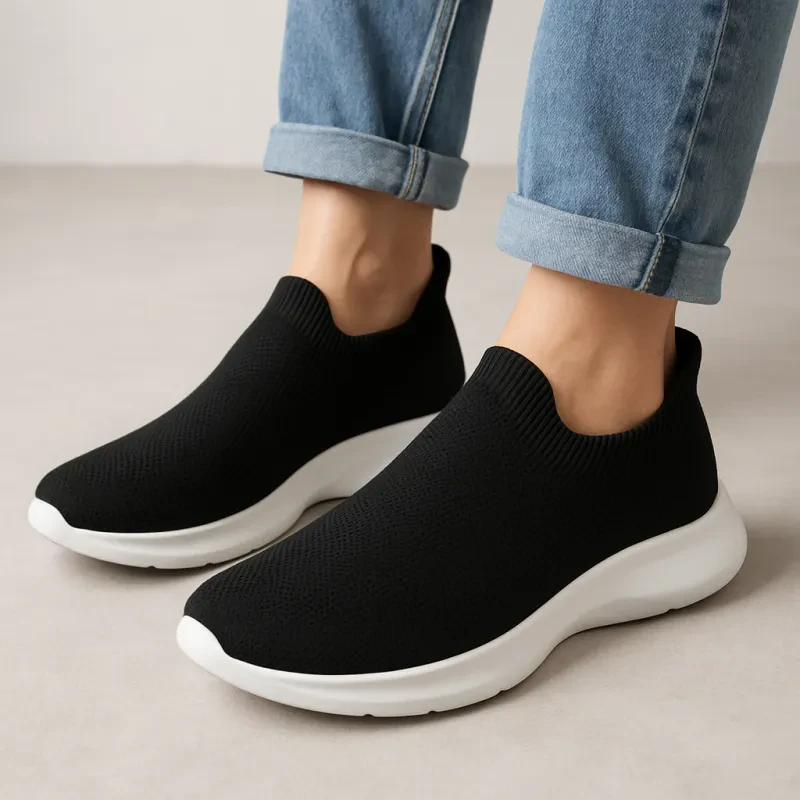Sneaker reselling can be a lucrative side hustle when approached with the right strategies. To succeed, it is essential to understand market trends. You should also identify which sneakers are in high demand and establish effective selling methods.
The sneaker reselling market has exploded in recent years, turning passionate collectors into savvy entrepreneurs. Whether you're a seasoned seller or just starting out, understanding the right strategies for buying and selling sneakers can make all the difference. In this post, we’ll explore tips on how to spot profitable shoes, where to buy them, and how to maximize your earnings in this booming market.

I have explored various profitable buying and selling strategies that can help you navigate this exciting space.
Key Takeaways
- Research market trends to find profitable sneaker options.
- Establish connections within the sneaker community for better deals.
- Understand legal considerations to maintain an ethical reselling practice.
Understanding the Sneaker Reselling Market

The sneaker reselling market has changed a lot over the years. Understanding its evolution, key players, market demand, and sneaker release schedules is essential for anyone looking to navigate this space successfully.
Evolution of Sneaker Culture
Sneaker culture began as a form of self-expression and personal style. Over time, it has turned into a global phenomenon. Influential figures like athletes and celebrities have played a significant role in this evolution.
As sneaker designs became linked to pop culture, the community grew. Like-minded individuals connect through forums, social media, and events. Limited releases from major brands have also sparked the hype, driving demand and prices upward.
In recent years, sustainability has gained attention in sneaker culture. Brands increasingly focus on eco-friendly materials, reflecting societal shifts. This adds another layer to the evolution of sneaker culture and its market.
Key Players in the Market
The sneaker reselling market features various key players. These include resellers, brands, and buyers. Resellers often use technology to get limited releases quickly. They monitor restocks, use bots, and know the market well.
Brands like Nike, Adidas, and New Balance frequently release limited-edition sneakers. These brands can create strong hype and demand for certain models. Some even partner with celebrities and designers to boost appeal.
Buyers range from casual sneaker enthusiasts to dedicated collectors. Their insights into market trends are crucial. They help shape resale prices, making them essential in this ecosystem.
Assessing Market Demand and Trends
To succeed in the sneaker reselling market, understanding demand is key. Demand can change based on trend shifts and product releases. Limited editions and collaborations often see high demand right after launch.
Market trends can be influenced by various factors. For instance, sneaker collaborations with popular figures can create buzz. Seasonal preferences and cultural influences also affect what styles are desired.
I follow trend reports and sales data to stay informed. Websites and sneaker apps often provide crucial insights. Keeping an eye on social media can also reveal emerging trends and fan favorites.
Sneaker Release Calendars
Sneaker release calendars are vital for any reseller. They provide dates for upcoming sneaker launches, often months in advance. Some popular websites publish these calendars regularly, detailing notable releases.
Knowing the release dates helps me prepare and strategize. Prioritizing certain sneakers can lead to better resale opportunities. Some releases generate more hype, while others may not – my research guides these decisions.
It’s also important to be aware of surprise drops and exclusive releases. Brands sometimes unveil products unexpectedly, causing spikes in demand. Keeping updated allows me to act quickly in these situations.
Establishing Your Sneaker Reselling Business

Starting a sneaker reselling business requires careful planning and a clear strategy. I’m focused on three key areas: creating a solid business plan, conducting thorough market research, and establishing branding that stands out.
Creating a Solid Business Plan
A business plan is essential for guiding my sneaker reselling journey. I outline my target market, which includes sneaker enthusiasts and casual buyers. I also define my goals, whether it's short-term profits or long-term growth.
Next, I detail my pricing strategy. This includes keeping track of sneaker prices, resale values, and competition. I make sure to incorporate startup costs, such as inventory purchases and marketing expenses.
In addition, I establish a schedule for product launches and sales events. This organized approach helps me stay on track and measure progress effectively.
Conducting Comprehensive Market Research
Market research plays a crucial role in my reselling success. I analyze current sneaker trends, popular models, and seasonal demand. I use tools like Google Trends and online forums to gather data about what buyers want.
I also keep an eye on resale platforms to understand price fluctuations. Joining sneaker communities helps me learn from experienced resellers and get insights on where to find the best deals.
Lastly, I identify competition. Knowing what other resellers offer allows me to position my business strategically and find gaps in the market.
Branding and Differentiation
Branding is vital in making my sneaker reselling business memorable. I start by creating a unique business name and logo that resonate with sneaker culture.
Next, I focus on my online presence. A professional website and engaging social media profiles help me reach my target audience. I also consider using high-quality images to showcase sneakers effectively.
To stand out, I identify what makes my business unique. Whether it’s offering rare finds, exceptional customer service, or exclusive releases, I ensure that my brand reflects these aspects. This differentiation helps me build customer loyalty and encourages repeat purchases.
Acquisition Strategies for Inventory

When it comes to building a successful sneaker reselling business, acquiring inventory is crucial. I have found that effective strategies can significantly boost the chance of securing sought-after sneakers. Below are methods that have worked for me.
Building Relationships with Retailers
Establishing good relationships with local retailers can be invaluable. I often visit stores and engage with staff to learn about upcoming releases. Retail staff may share information about restocks or limited drops.
Additionally, some retailers prioritize loyal customers when selling limited editions. Showing genuine interest and becoming a regular customer can make a difference. I always try to build rapport by asking questions and sharing my enthusiasm for sneakers.
Sometimes, retailers even hold small events where customers can get exclusive early access to drops. Being on friendly terms with them can put me at the front of this line.
Utilizing Bots for Early Access
Automating your purchasing process with bots can be a game changer. I use bots to monitor and purchase sneakers during retail drops. This allows me to nab limited pairs before they sell out online.
When setting up a bot, make sure to choose a reliable one. Spend time researching options that have a good track record. Then, configure the bot correctly for the specific site to enhance its effectiveness.
Lastly, stay updated on the latest releases since many drops can happen at any time, including surprise releases. This helps your bot run smoothly when the time comes.
Joining Cook Groups and Communities
Cook groups are online communities where members share tips and alert each other about sneaker drops. By joining these groups, I receive insider information, including drop times and links to purchase.
Many cook groups require a subscription fee, but I believe the investment is worthwhile. Access to experienced resellers' advice can help me make more informed decisions on which sneakers to buy.
Active participation in these communities also lets me network with fellow resellers. This can lead to collaboration opportunities, like shared orders for hard-to-find sneakers. Consequently, being part of a group enhances my chances of expanding my inventory.
Identifying and Securing Profitable Sneakers

Finding the right sneakers to resell is key to my success in this business. By focusing on resale value, identifying hyped models, and investing in limited editions, I can increase my chances of making a profit.
Analyzing Resale Value
To make informed buying decisions, I always check the resale value of sneakers. Websites like StockX and GOAT provide real-time insight into sneaker prices. I pay attention to how much a sneaker is being sold for compared to its retail price.
It's also essential to look for trends. For instance, Nike Air Jordans often hold their value over time. Meanwhile, models like Yeezys and Nike SB Dunks can sometimes fluctuate. Knowing the historical data can help you anticipate future resale potential.
Spotting Hyped Sneakers
Identifying hyped sneakers can make all the difference in my reselling strategy. Hype usually comes from brand collaborations or limited releases. For example, Nike Off-White collections and Adidas Yeezy drops create strong demand.
I follow sneaker news and social media to see which releases are generating buzz. Events like sneaker conventions or exclusive online drops often indicate a sneaker's potential to sell well later.
I also look for features that collectors love, such as unique colorways or special packaging. These factors often add to a sneaker's desirability and resale value.
Investing in Limited Edition Releases
Limited edition sneakers are usually my best bets for securing profits. Brands like Nike and Adidas frequently release exclusive models that can quickly appreciate in value. I make it a point to stay informed about upcoming releases through newsletters and sneaker calendar websites.
To increase my chances of obtaining these limited pairs, I often enter raffles or follow specific retailers' release schedules. Knowing when and where they drop helps me secure pairs before they sell out. This foresight can lead to profitable returns.
Selling and Distribution Methods
Selling sneakers effectively means choosing the right platforms, setting prices wisely, and making sure listings stand out. These strategies directly impact profit margins and how quickly I can move my inventory in the competitive sneaker market.
Choosing the Right Online Marketplaces
When I look for platforms to sell sneakers, I consider options like StockX, GOAT, and eBay. Each has its audience and features.
- StockX is great for verified transactions and transparent pricing. It’s ideal for limited edition or popular sneakers.
- GOAT offers flexible selling options and a large community of sneaker enthusiasts. It also checks the authenticity of shoes, which builds trust.
- eBay provides a broad reach, but I need to be careful about pricing and authenticity issues. Using eBay allows me to set my auctions or buy-it-now prices.
I analyze fees associated with each platform to understand my profit margins. Selecting the right marketplace can make a significant difference in my sales strategy.
Setting Competitive Prices
Pricing my sneakers is crucial for attracting buyers while ensuring a decent profit. I research similar listings on different platforms to gauge average prices.
- Market Trends: Keeping an eye on current sneaker trends helps me adjust my prices. If a shoe is in high demand, I can price it higher.
- Condition: The condition of my sneakers also affects pricing. Brand-new kicks can carry a premium, while used pairs need competitive pricing.
- Fees: I never forget to account for selling fees. Platforms like StockX and GOAT take a percentage of sales, which impacts my final earnings.
Using clear pricing strategies ensures my sneakers sell quicker and at better profit margins.
Optimizing Listings for Maximum Exposure
To enhance the visibility of my sneakers, I focus on creating eye-catching listings. This means high-quality images and strong descriptions.
- Photos: I take multiple high-resolution images from different angles. Including pics of any flaws builds trust with potential buyers.
- Titles: Using clear, keyword-rich titles helps my listings show up in searches. Instead of "Sneakers for Sale," I write "Nike Air Jordan 1 Retro High OG – Size 10."
- Descriptions: I provide detailed descriptions. I include brand, model, condition, size, and any unique features.
Engaging listings help maximize exposure, making it easier for buyers to find and purchase my sneakers.
Networking and Building Industry Relationships
Building strong connections in the sneaker reselling business is essential. Networking allows me to tap into resources and gain insights that are invaluable for success. It creates opportunities to learn from others and collaborate with key players in the market.
Attending Sneaker Conventions
Attending sneaker conventions is a great way to meet fellow sneakerheads and industry professionals. Events like Sneaker Con provide a platform for networking, education, and trade. I focus on engaging with vendors and influencers who are knowledgeable about market trends.
These events often feature panels, workshops, and Q&A sessions. I take advantage of the opportunity to ask questions and gain insights that can help my reselling strategy. Building relationships at these conventions can lead to partnerships and exclusive deals.
Forming Partnerships
Forming partnerships with other resellers or businesses in the sneaker industry can greatly enhance my network. I look for like-minded individuals who share my passion and vision. Collaborating can allow me to share resources, tips, and inventory.
Having reliable partners can also lead to group buying opportunities. Purchasing sneakers in bulk can significantly reduce costs. I often collaborate with partners to host pop-up shops, which increases visibility and attracts more customers.
Engaging with the Sneakerhead Community
Engaging with the sneakerhead community is key to staying informed and connected. I make it a point to participate in online forums and social media groups focused on sneakers. By sharing my experiences and insights, I establish myself as a knowledgeable member of the community.
Participating in discussions helps me learn about the latest trends and sneaker releases. It’s not just about selling; it’s about building relationships and trust within the community. When I contribute positively, I often find opportunities to collaborate or trade sneakers with fellow enthusiasts.
Legal and Ethical Considerations
In sneaker reselling, it’s crucial to be aware of the legal and ethical landscape. Understanding the implications of copyrights and trademarks, the use of technology in reselling, and maintaining fair business practices can help navigate challenges in this industry.
Understanding Copyrights and Trademarks
When I resell shoes, I must be cautious about copyrights and trademarks. Many sneaker brands hold strong trademarks on their logos and designs. Selling counterfeit or unauthorized replicas can lead to legal consequences.
Researching brand guidelines helps ensure compliance. I should avoid using brand names or logos in advertising unless authorized. This approach helps protect my business from potential lawsuits while fostering trust with customers.
Navigating the Use of Bots and Software
Using bots to purchase limited-edition sneakers can offer advantages, but it also raises ethical questions. Many retailers have policies against bot usage, deeming it unfair to regular shoppers. If I choose to use bots, I must ensure compliance with retailer terms and conditions.
I must also be aware of the risks involved. Some retailers may ban accounts caught using bots, jeopardizing my resale efforts. Therefore, weighing these risks against potential benefits is essential for long-term success.
Fair Business Practices
Maintaining fair business practices is vital in sneaker reselling. I should always be transparent about the condition of the shoes I sell and their authenticity. Misleading customers can damage my reputation and lead to negative reviews or disputes.
Additionally, I need to set reasonable prices based on market demand. Inflating prices excessively to exploit scarcity can create a bad image and repel buyers. Embracing honesty and integrity not only helps sustain my business but also builds loyalty among customers.
Scaling Your Resell Business
As I work to grow my sneaker reselling business, I focus on turning it from a side hustle into a full-time venture. I understand the importance of using data to guide my decisions and diversifying my sneaker portfolio to maximize profits.
From Side Hustle to Full-Time Business
Turning my sneaker reselling side hustle into a full-time career requires dedication and planning. I start by setting clear financial goals, such as monthly sales targets and profit margins. This helps me track progress and adjust my strategy.
I also need to invest time in expanding my knowledge of the sneaker market. Following trends and anticipating demand plays a crucial role in my reselling success. Building a strong online presence through social media and sneaker marketplaces helps reach potential buyers effectively.
Leveraging Data for Informed Decisions
Using data is vital to my reselling strategy. I analyze metrics like resale values, market trends, and customer preferences. Tools like Google Trends and sneaker-specific analytics provide insights into what models are gaining popularity.
I keep track of previous sales to identify which sneakers perform well. Knowing the right prices to set is key. If I price too high, I risk losing buyers, while underpricing means lost profit. Adjusting based on real-time data allows me to make informed decisions.
Diversification of Sneaker Portfolio
Diversifying my sneaker portfolio helps balance risks and increases potential earnings. I aim to include a range of brands, styles, and price points. This not only appeals to a broader audience but also protects me against market fluctuations.
Limited edition releases often yield high profits, but they can be unpredictable. I also explore classic models and collaborations, as they usually have steady demand. Keeping a variety of sneakers allows me to adapt quickly to changes in market trends and ensures consistent sales.
Afterword: The Future of Sneaker Reselling
The sneaker resale market is evolving quickly. I see a transition to more sustainable practices and longer-term investments. Resellers are now considering not just immediate profits, but also the long-term value of certain models.
Platforms are expanding, with marketplaces like StockX and GOAT leading the way. I believe this growth will make it easier for buyers and sellers to connect.
High-profile collaborations, like those with Travis Scott, continue to create buzz. Limited releases often lead to increased demand, which I think will sustain high resale values.
Cultural icons and movies, like Back to the Future, also shape trends. Nostalgic sneakers can drive interest and create new opportunities.
To stay competitive, I focus on market research. Knowing what's trending and which styles are in demand helps me make informed decisions.
Frequently Asked Questions
In this section, I will address common questions related to starting and running a sneaker reselling business. These questions cover financial requirements, potential income, and effective strategies to maximize profits.
What are the initial financial requirements to start a sneaker reselling business?
To begin, I need to consider my initial investment. This usually ranges from a few hundred to several thousand dollars. The amount depends on how many sneakers I plan to buy and their retail prices. It's wise to allocate funds for platform fees and shipping costs as well.
What is the average yearly income for a sneaker reseller?
My income as a sneaker reseller can vary widely. On average, many resellers report earning between $10,000 and $50,000 annually. Success depends on the number of sales, sneaker selection, and market trends influencing demand.
What are the most profitable sneakers for beginners to resell?
As a beginner, I should focus on limited edition releases and collaborations. Sneakers from brands like Nike and Adidas often yield high resale values. Models like Air Jordans and Yeezys are popular choices. Recognizing which sneakers have high demand is key.
How can one maximize profits within the sneaker resale market?
To maximize my profits, I can scout for sneakers with high demand and limited supply. It's essential to track market trends using resale platforms like StockX or GOAT. Timing my purchases and sales also plays a critical role in getting the best prices.
What profit margin should be targeted when reselling sneakers?
I typically aim for a profit margin of at least 20% to 30%. This allows for flexibility in pricing and covers any unexpected costs. Higher margins can be achieved with exclusive sneakers or by purchasing them at lower prices during sales.
What strategies contribute to a successful sneaker reselling operation?
Successful reselling requires a combination of market research and networking.
I must stay updated on upcoming releases and follow sneaker influencers.
Building relationships with other resellers and retailers can also open doors to better deals and collaborations.
DISCLAIMER
This document is provided for general information purposes only and should not be relied upon as providing legal advice, technical, or specific operational guidance to the reader, whether as to the practices described in the document or the applicable legal requirements and regulations. {Sazzy Sneaks} expressly disclaims any responsibility for liability arising from or related to the use or misuse of any information in this document.
